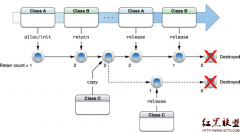IOS 线程处理
IOS中,如果要在主线程中启动一个子线程,可以又两种方法:
[cpp]
[NSThread detachNewThreadSelector:@selector(myThreadMainMethod:) toTarget:self withObject:nil];
这是在cocoa早期提供的方法,因此你可以在任何版本的ios和mac上调用此方法。
在 OS X v10.5(or later)和IOS中,苹果又提供了一种方法,可以允许你获得你的thread句柄,并且更方便的让主线程控制子线程。
[cpp]
NSThread* myThread = [[NSThread alloc] initWithTarget:self
selector:@selector(myThreadMainMethod:)
object:nil];
[myThread start]; // Actually create the thread
如果要停止子线程,有两种方法:
第一种,是在子线程中执行:
[cpp]
[NSThread exit];
另一种是在主线程执行:
[cpp]
[myThread cancel];
要注意的是,[mThread cancel]; 并不能exit线程,只是标记为canceled,但线程并没有死掉。加入你在子线程中执行了一个循环,则cancel后,循环还在继续,你需要在循环的条件判断中加入 !mThread.isCancelled 来判断子线程是否已经被cancel来决定是否继续循环。
下面是我的一个测试demo,可以参考一下:
[cpp]
@synthesize mThread;
- (void)viewDidLoad
{
[super viewDidLoad];
NSLog(@"main thread:%@",[NSThread currentThread]);
mThread=[[NSThread alloc] initWithTarget:self selector:@selector(subThreadMethod) object:nil];
[NSThread detachNewThreadSelector:@selector(performMethod) toTarget:self withObject:nil];
}
-(void)subThreadMethod{
int i=1;
while (i++>0 && ![[NSThread currentThread]isCancelled]) {
NSLog(@"subthread i:%d ,thread:%@",i,[NSThread currentThread]);
}
}
- (IBAction)startThread:(id)sender {
NSLog(@"startThread....");
[mThread start];
}
- (IBAction)stopThread:(id)sender {
NSLog(@"mThread.isCancelled: %d",mThread.isCancelled);
if (!mThread.isCancelled) {
[mThread cancel];
// [mThread exit]; //exit 是类方法,不可以用在对象上
相关新闻>>
- 发表评论
-
- 最新评论 进入详细评论页>>

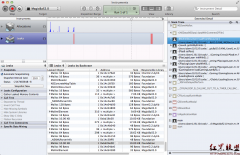

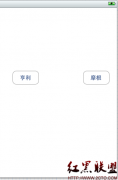
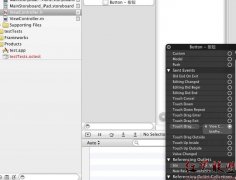



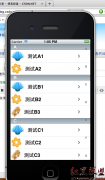
![[iPhone中级]iPhone团购信息客户端的开发 (二)](/uploads/allimg/131022/200H11235-0-lp.png)
